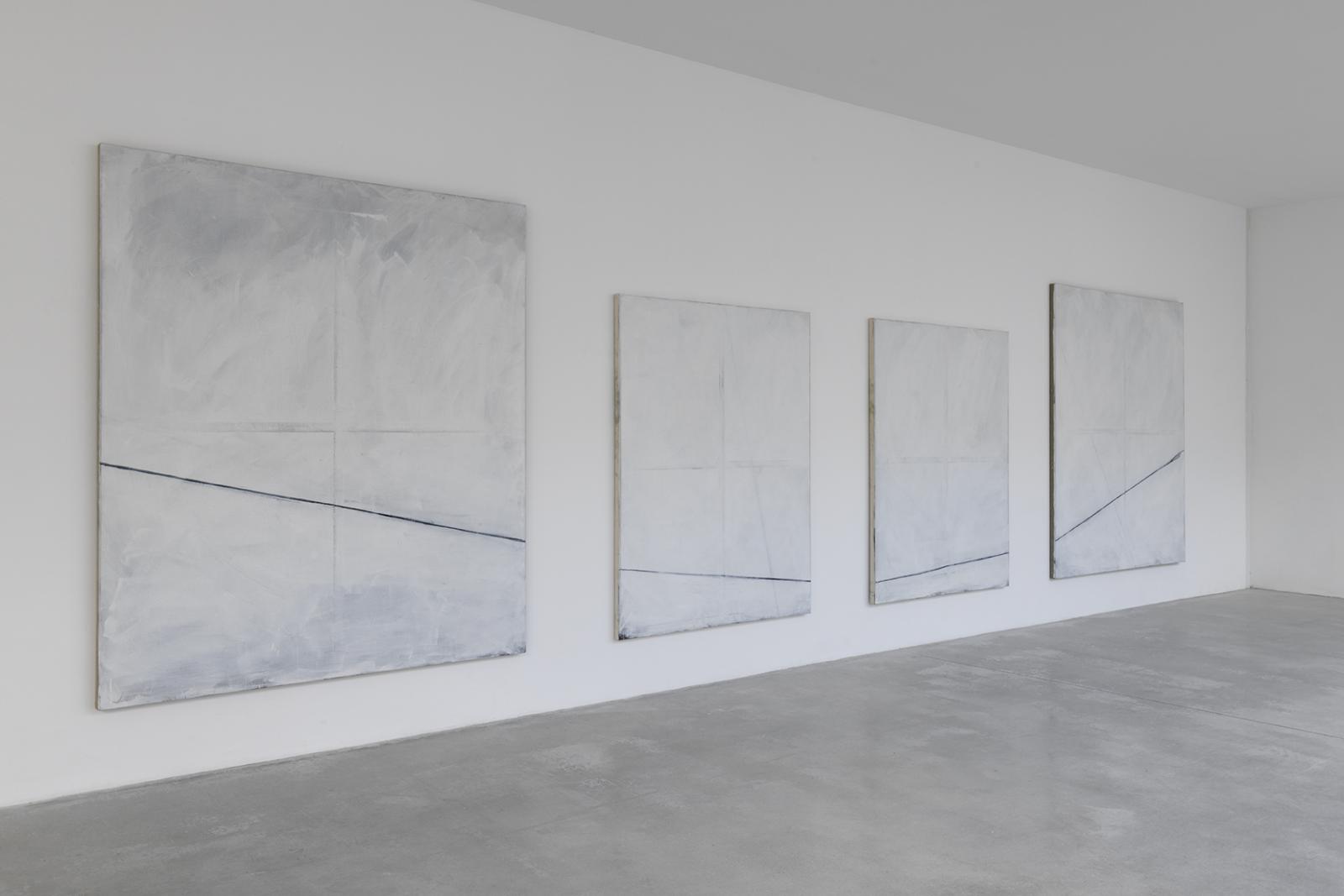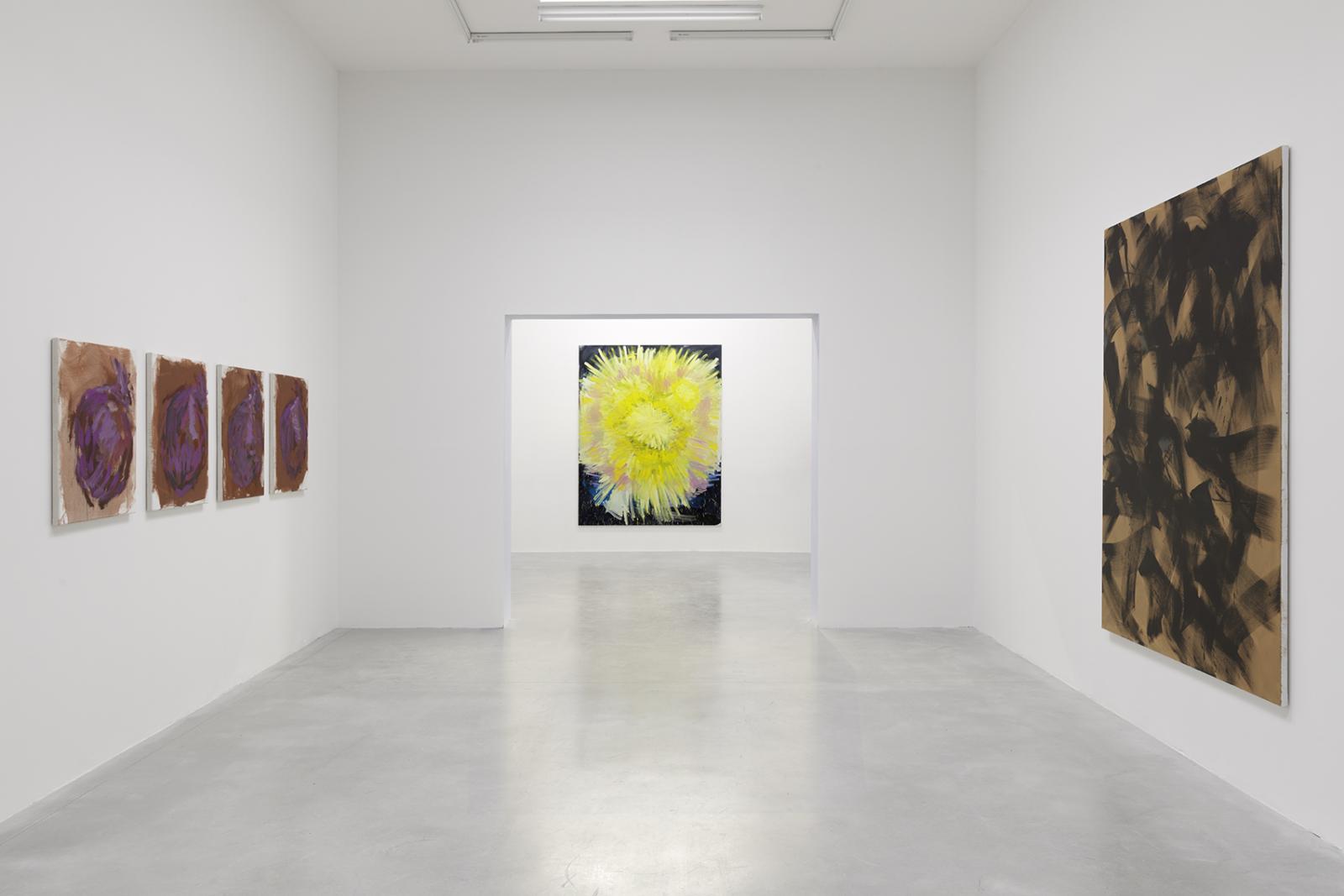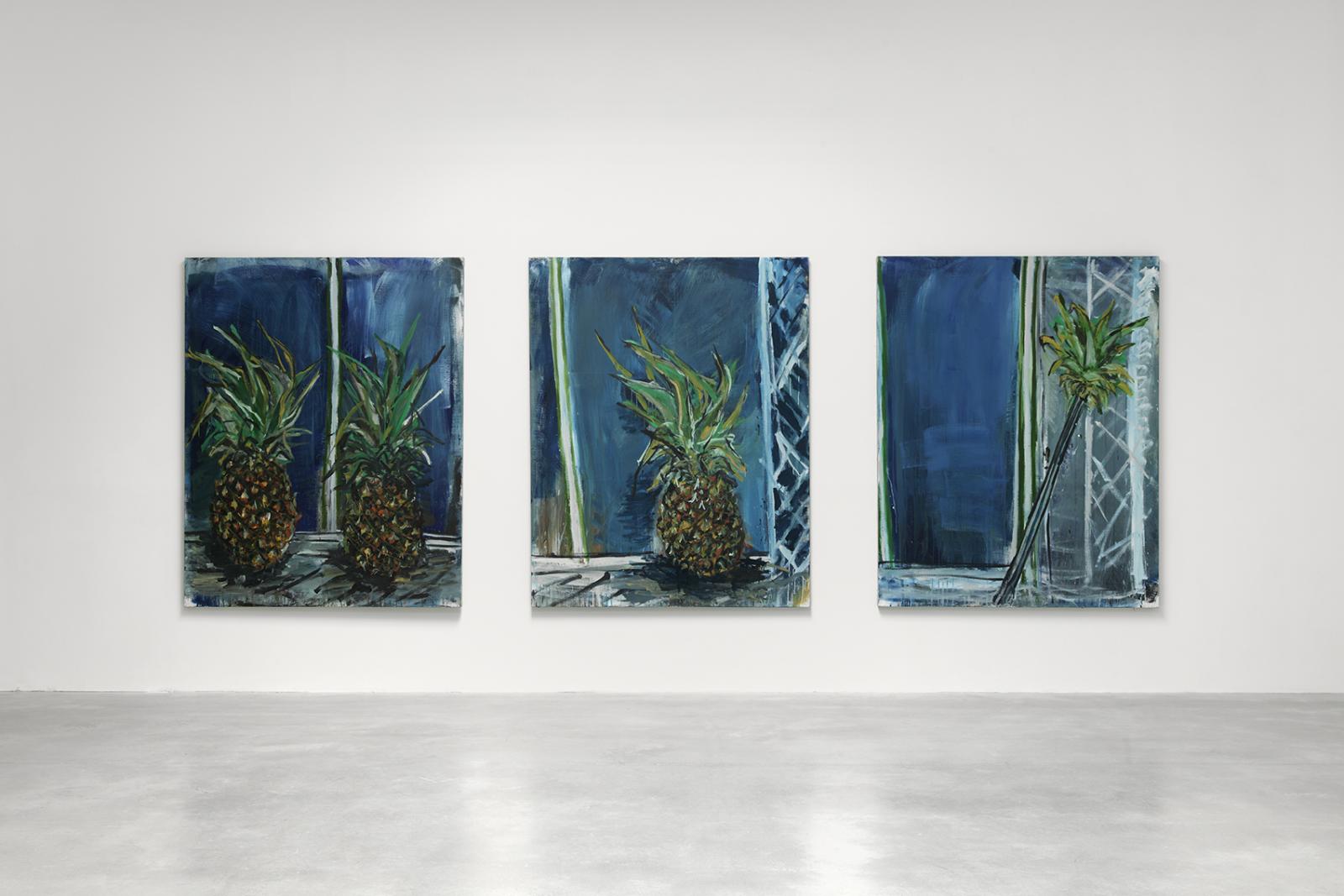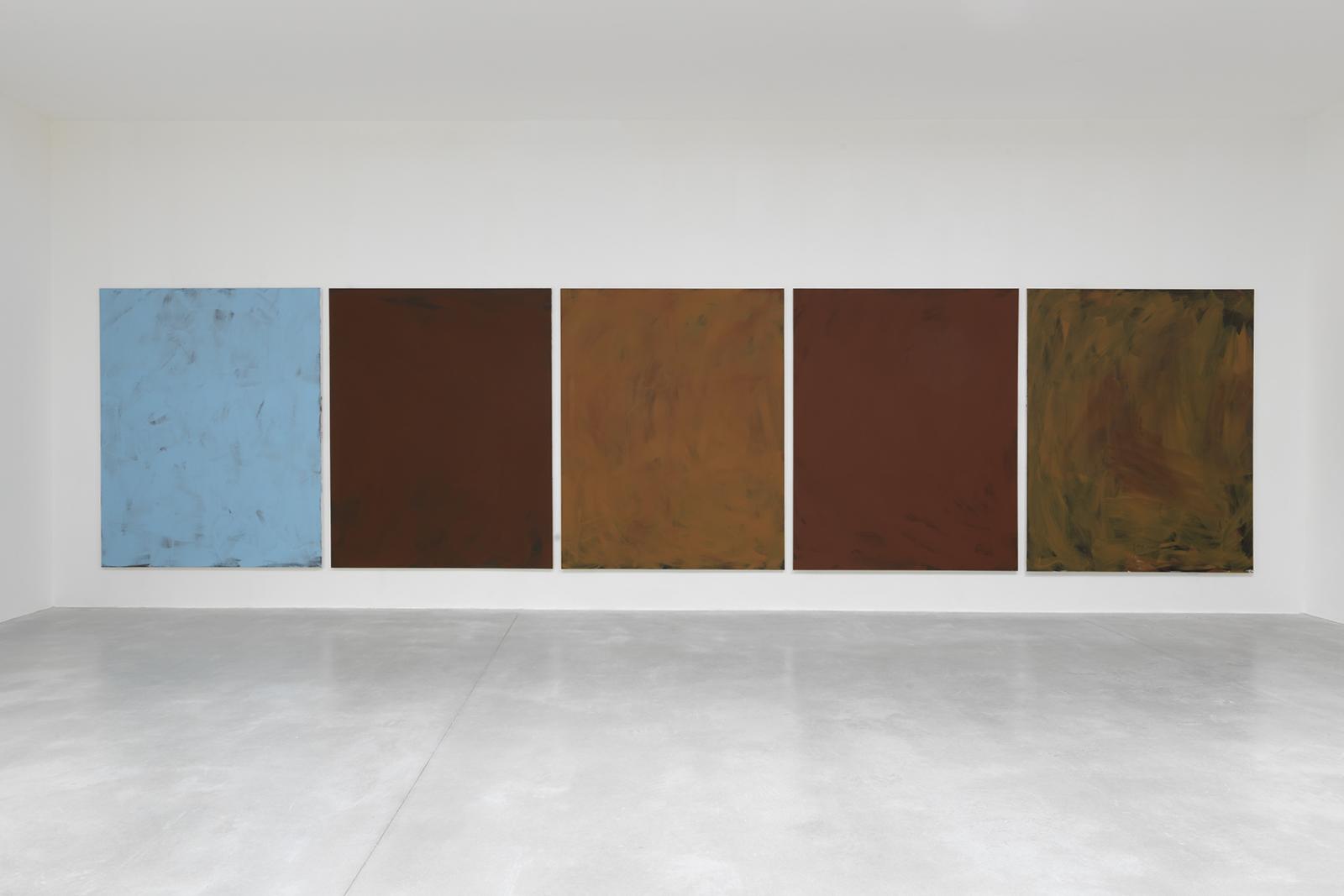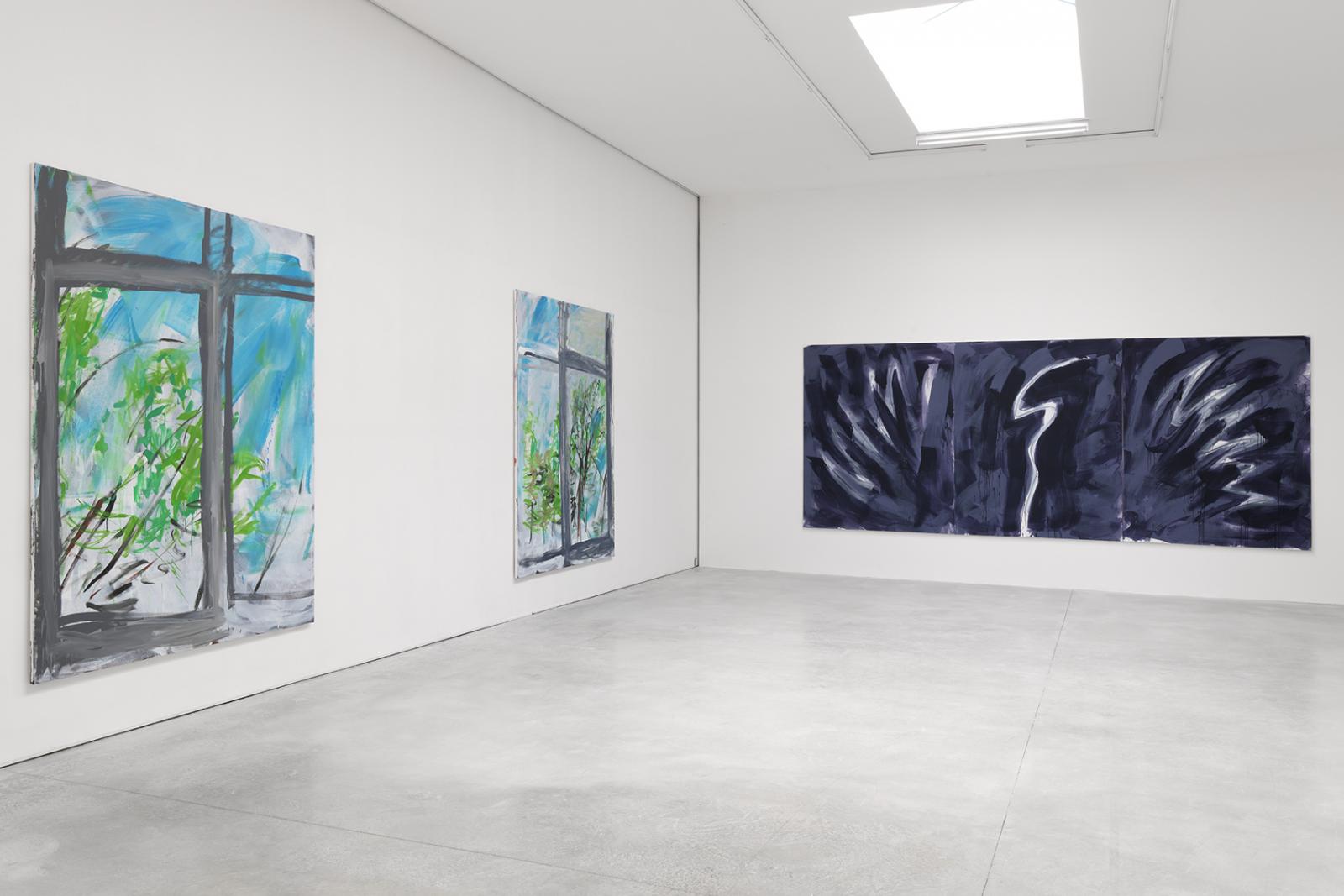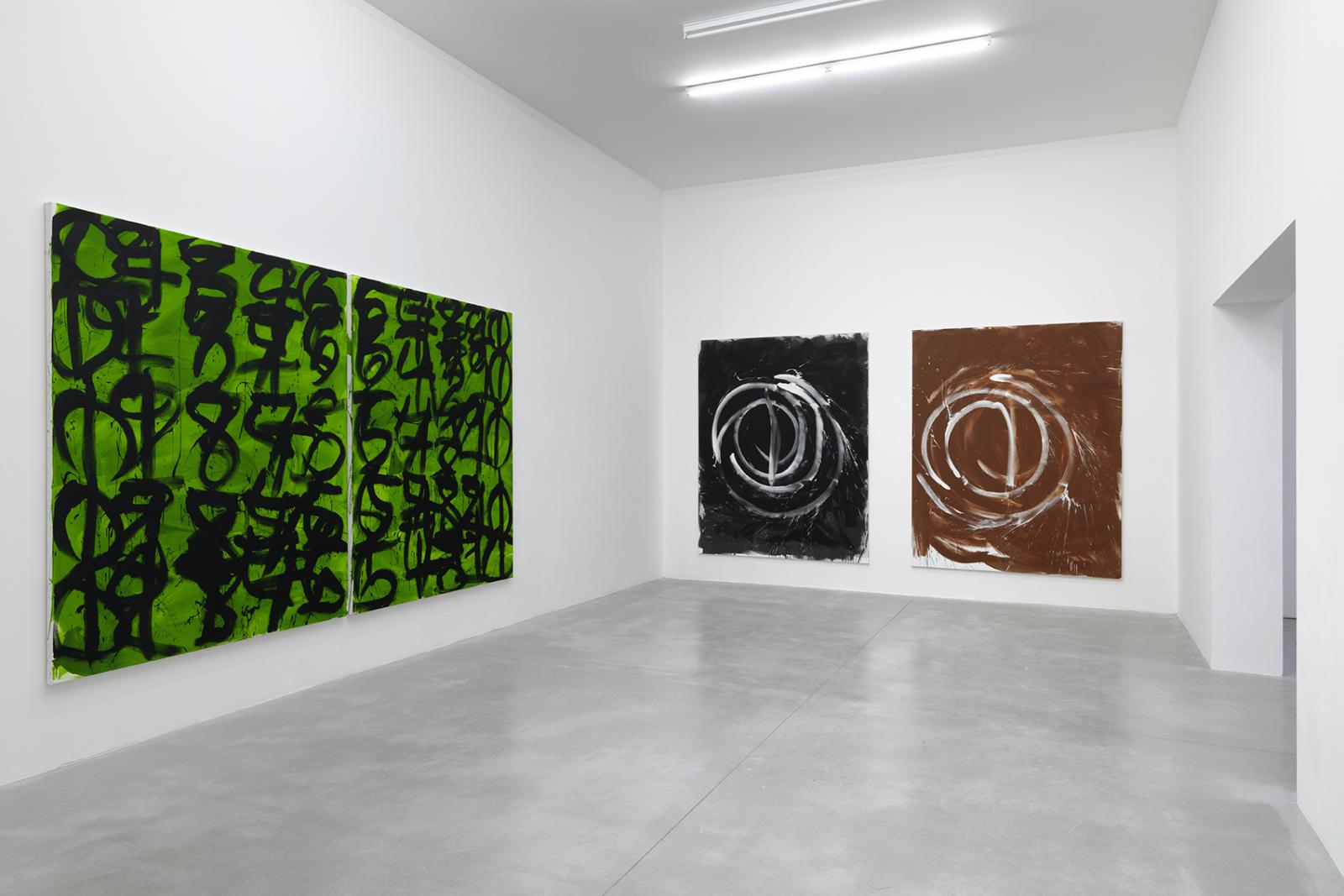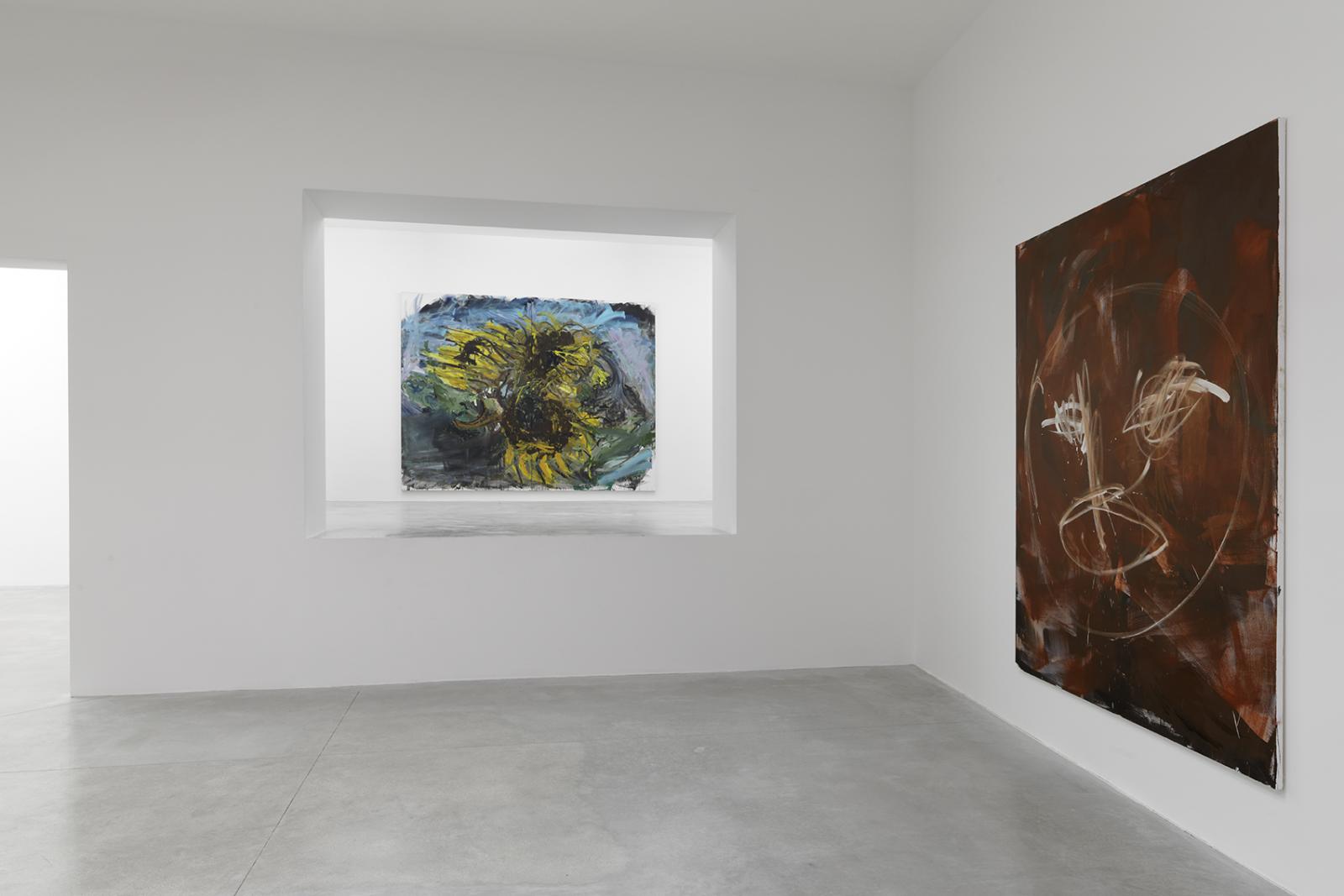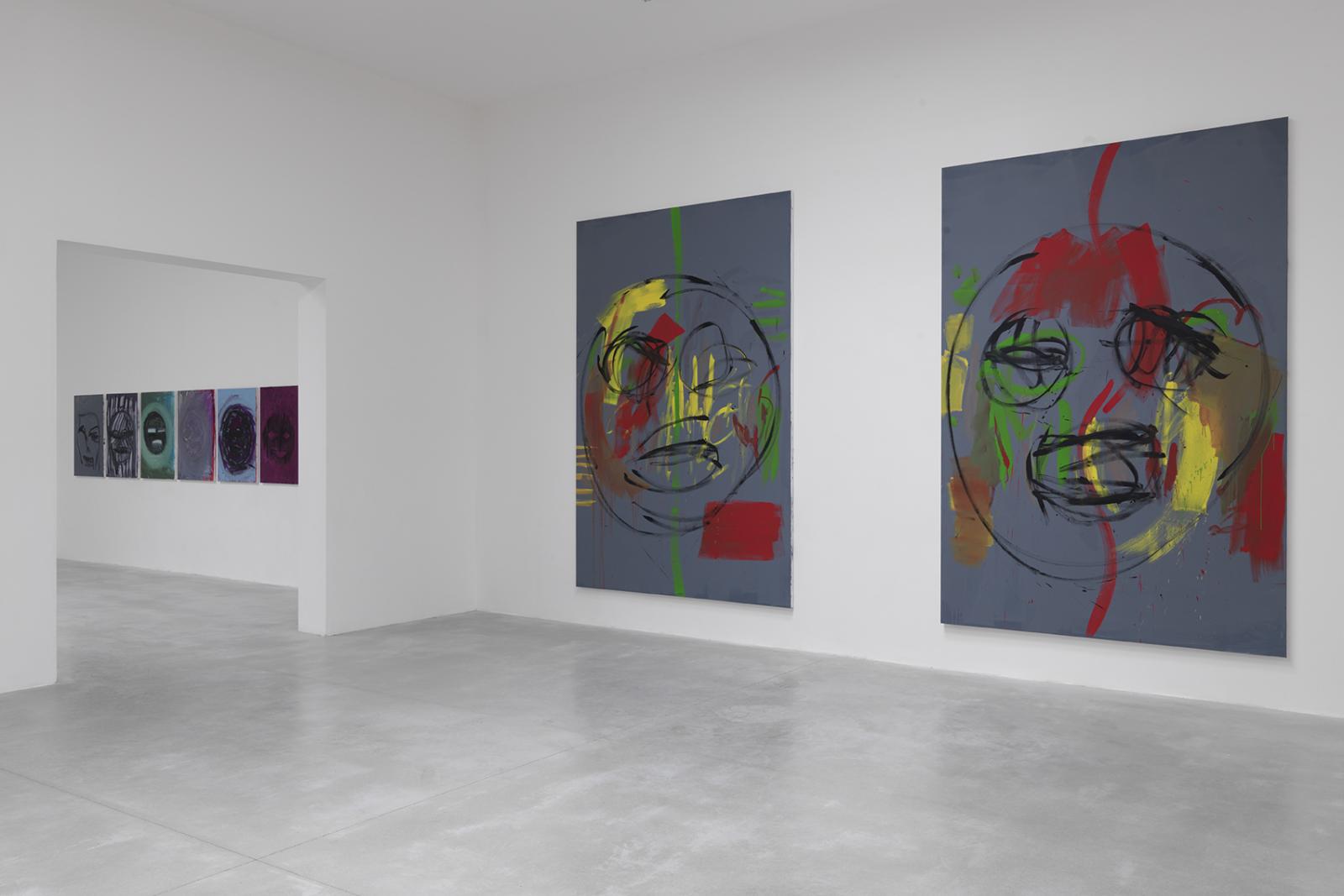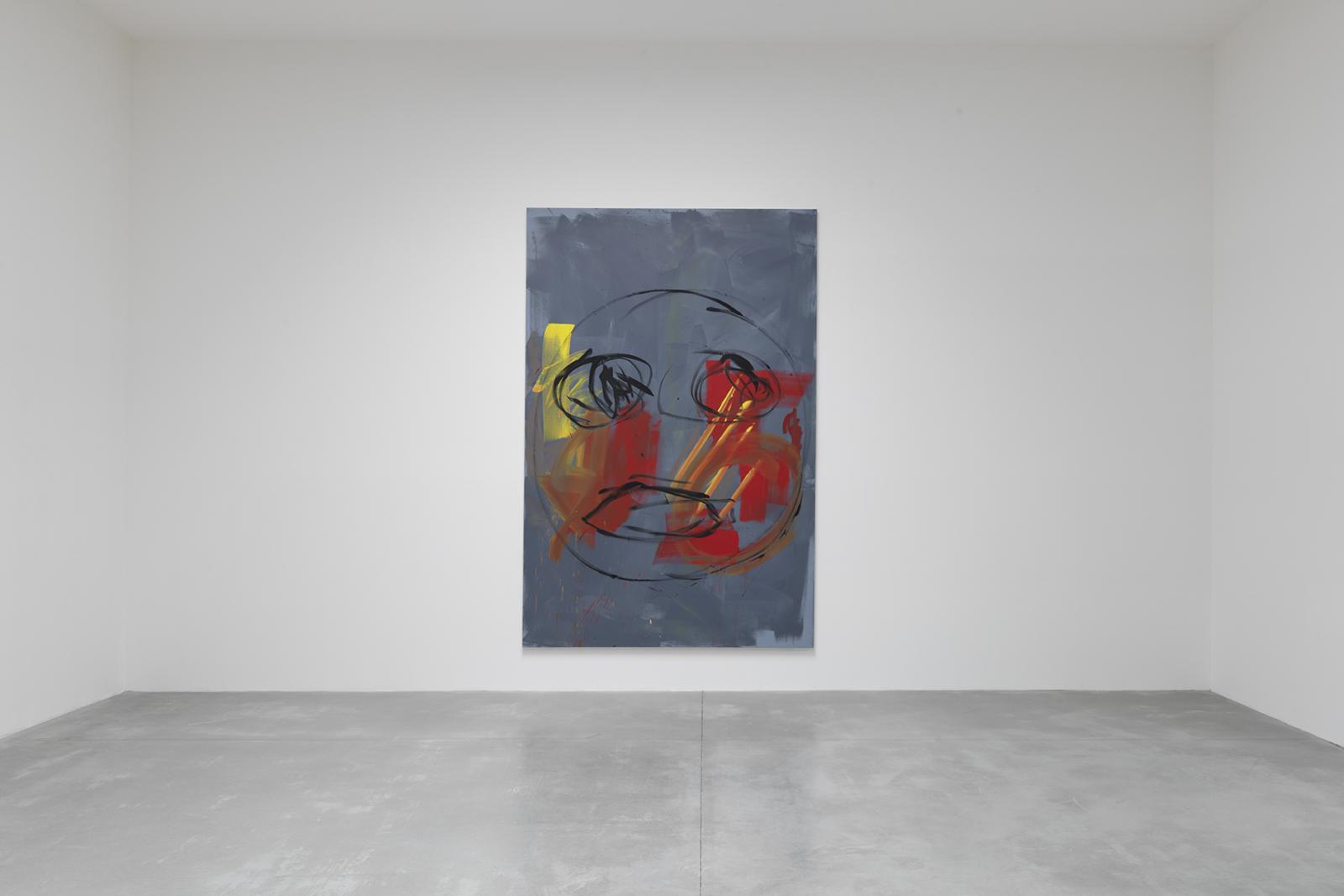David Hominal
David Hominal
DAVID HOMINAL (OR THE FUTILE GLORY OF PAINTING)
Let us borrow, in our own way, the ancient argument of Simonides of Ceos, quoted by Plutarch, according to whom painting is silent poetry, and poetry, painting that speaks.1 Or even the words of Marcel Broodthaers: “What is painting? Well, it’s literature. So what, then, is literature? Well, it’s painting.”2
Let us assume that we have transcended the question of painting: what it is, what it is worth, what it promises. Let us also admit that we must now confront ourselves with forms of art that are not hemmed in by the limits of style, technique, and movements, where painting nevertheless still maintains its position, in the same capacity as other forms. And that chaos, this tumult of lines that abstraction attempted to contain, is here, more than ever, the condition of art, of its adventure.
David Hominal’s œuvre stands firmly in the middle of this contemporary tumult, neither revealing nor concealing any hidden parts. It stands there, in the entire crudeness of its appearance. No tongue-in-cheek humor, no false flooring, illusion, or trickery. Hominal’s painting expresses only what it shows, diverting the endeavors, as tiring as they are numerous, to clarify and reveal.
Others before him, fanatical, maniacal, or ironic, have taken charge of the work of sabotage or mourning: to bury melancholy, put an end to ideologies through industrial production, diagnose the death of the author, behead heroes. Once this desire to put an end to things came to an end, it was up to a new generation of artists to wonder about what was still possible, about what “we” want, what we could still do, unprejudiced by the past and even less by the present.
What remains for today’s artist, even and especially when they consider themselves irrelevant to the present day, is to establish a pictorial code. Which is to say a code, ideally binary, internal to painting. It is in this code that the key to David Hominal’s latest series of paintings lies, in their return to Piet Mondrian’s programme: the horizontal and the vertical, and that is it.
Namely, that the painting stops seeming to represent something, because its task is entirely different: to carry out a division of its own surface. Hence the crosses, rectangles, lines, oblique divisions. A pictorial code that would not be the simple application of a geometrical system, but which itself carries out a division of its own surface in relation to architectural division, with that of each wall, each window, while the painting does not belong more to the wall than to the window.
And this was indeed Mondrian’s idea: a painting that finds the reason for its existence in so far as it does not conjure up chaos, but confronts it close up in order to make a kind of possible modern order emerge from it. In order to perceive an interior life in it that has become empty, and to be as close as possible to the material and molecular tumult, giving itself a chance to grab hold of the embryo and the rhythm, a modern order that would be a code of life.
In David Hominal’s work, the pictorial experience brushes against this adventure at once abstract, expressionist, and figurative, avoiding none of these dangers. The gaze accompanies the line beyond the painting. The line continues elsewhere, in music, in spoken texts, in shattered objects, in the revolutionary movements of L’Après-midi d’un faune (2010), the single film, unbridled by repetition, which the artist created over several years, in different places. There is indeed abstraction in this video, a line without beginning or end that finds no contours. But an abstraction endowed with an intense vitality, neither organic, nor geometric. David Hominal here seizes what happens “between” things, the movement of air, this world without contours, between light and shadow, this fundamental moment when the hand freed of the eye seems to be driven by a strange impulse, the rules of which the eye no longer manages to grasp, a line of the hand that finds no rest. It enters at this moment into a tactile relationship with the floor, a frenetic dance with the binary code of the horizontal and the vertical.
Like Marcel Broodhthaers before him, to whom he has often referred, David Hominal denies art any power of conciliation or reconciliation, responding by the accumulation of words or mussels, leaving unresolved and indecipherable the oppositions of high and low, of major and minor, all these boundaries between literature, painting, and the image, which still structure thought today. Far from pious commentaries, attributing a political and critical purpose to his approach, he refuses the deliverance of a clear message, at the risk of burning himself on the artifice of these manipulations of meaning and morality. His early works, which might have evoked the signs of war or power, have been replaced by silent forms, without references or titles.
To develop this internal code to painting, Hominal bases his practice on structure and language, a score that constitutes the code’s poetic, rhythmic, and resonant contribution. But the inclusion of the sign or of writing is never resigned to a statement, it does not fall into the trap of analogy and meaning. The sign is there, and being there, makes itself seen without expressing anything else. It is not a supplement. His paintings invent nothing that we do not already know, express nothing, neither the feelings, nor the tactical impulses, nor the decisions, however many and precise, which have determined their creation.
In his work there is a constant oscillation between homage and dismantling, between too much and too little, between elimination (of sources, of contexts) and appropriation (of sensations, of intensities), from which bare forms arise.
When David Hominal continues, in his own way, various traditions — that of the Romantic landscape of Caspar David Friedrich, the fantastic expressionism of James Ensor, when he thinks of Willem de Kooning and his still lifes — it is essentially in terms of their experimental aspects. Although he ventures into different areas such as the history of art, Sufi poetry, slam, dance, and automatic writing, it is always for good and bad reasons. He uses them, some against and with others, like so many viewpoints, vanishing points on the world, never as specific value systems. Far from claiming a single heritage or education of one kind or another, Hominal’s approach is above all physical and chemical. The effects of painting, not their supposed causes, are what interest him. He is attentive to what arises, he has no programme to verify. He is waiting for that certain something. When he works with primary or impure colors, with flat planes or texture, when he dismantles objects, tears off images, or uses smoke, he wants to see what will happen: the disaster, the collapse, and the freedom emanating from these transfer operations which he inflicts on his oeuvre.
Some paintings refer back to the disturbing enigma of Andy Warhol’s canvases. We sense something that we recognize but do not see. There is the arbitrary color, this yellow, this violet. But also the sensation that the painting contains an image that has faded, a proposition that is not clear, a repentance.
We also think of the artist described by Samuel Beckett, who prefers “the expression that there is nothing to express, nothing with which to express, nothing from which to express, no power to express, no desire to express, together with the obligation to express.”3
To paint! There is something resembling a sudden impatience. It is possible that the climate of total war and the decline of revolutionary ideas has something to do with this urgency, but no proof of it exists. The prototype is not the young artist, but the artist born a second time.
Sometimes, Hominal thinks he is not of his time and that for him the words “classical,” “modernity,” “avant- gardism” are not necessary.
Although there is indeed an irrelevance to the present day in this oeuvre, this is only equalled by its indifference to all forms of cynicism and rhetoric. It is not a question of creating a distance or of a mise en abyme, but of a battle that the artist wages inch by inch with an activity that is not easily subdued. A war that requires a strategy (approaching painting through all other means: photography, video, installation, dance, sculpture, drawing, text, music). Then to return to painting, a relationship that is not self-evident, tyrannical and tiring, with this fear of definitively entering too deeply into it, at the risk of the “daub,” of being in contact with all the potential heavy-handedness, affectation, bad taste that painting contains. In this concern to envisage an art by the yardstick of its degeneration, there is a gravity that can transform itself into lightness. As though it were necessary to pass through this aforementioned inevitability in order to get rid of the heaviness inherent in the act of painting and creating.
For him and those who accompany him on this adventure which is as beautiful as it is disgusting, there will be no golden age, nor a Great Evening, but a hole in which all excesses are allowed, including those of regression. The paintings of pineapples or of sunflowers constitute the corpus of this regressive undertaking considered as one of the fine arts. Where the pleasure of painting for absolutely nothing, and, at the same time, with a radical insolence, which admits of no alibi other than that of repetition, can be seen.
—Stéphanie Moisdon
1 In Plutarch, De gloria Atheniensium (On the Fame of the Athenians).
2 Marcel Broodthaers, undated note in French, reproduced in Marcel Broodthaers, exh. cat., Tate Gallery, London 1980,
p. 31. Our translation.
Published in Laurence Schmidlin (ed.), David Hominal, JRP|Ringier, Zurich 2016, p. 15–17. On the occasion of the artist’s exhibition at Musée Jenisch Vevey, Vevey, March 4-May 15, 2016. © JRP|Ringier, Zurich
3 Dialogue in reference to the work of Pierre Tal Coat. In Samuel Beckett, Proust and Three Dialogues with Georges Duthuit, Calder and Boyars, London 1965, p. 103.
